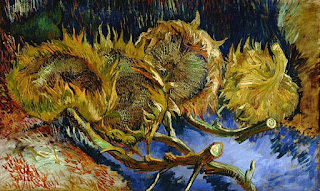We can talk about what Jesus did: conquering sin and death, redeeming humanity, doing for us what we could not do for ourselves. Mexican muralist Jesse Clemente Orozco gives a different image of what Christ did through his death and resurrection (though not necessarily on Easter morning) in the work shown here.
José Clemente Orozco. Christo Destruye su Cruz. 1943. INBA/MACG
What Jesus does here isn't just come down from the cross or overcome the cross. He destroys his cross. He takes an axe and hacks at the base of the cross (though often the cross is described as marble like the architectural forms behind Jesus. Though our point of view is from an oblique angle, we can see that the cross is completely separated from its base. The cross is set to fall. What does that mean in light of the Easter story?
This is one of three versions of Christ destroying his cross. Another version is at Dartmouth College. Painted a little more than a decade before the MACG version, the colors are more vivid and primary. The overall mood is more glaring, perhaps even more violent, than the later version.
José Clemente Orozco. Christ Destroying His Cross. 1932. Dartmouth College.
Do either of these images speak to your understanding of what Jesus did on Easter? Though the composition does not use the traditional imagery of Easter morning, both show a more demonstrative, more active Jesus as his life, death and resurrection changes the world.
 For thoughts on the followers who came to the tomb, click here.
For thoughts on the followers who came to the tomb, click here.
For thoughts on Easter and the calendar, click here.
For thoughts on Jesus' words to Mary, click here.
Art&Faith Matters Facebook page this week is a different approach to a visual element of Easter worship. Take a look.












